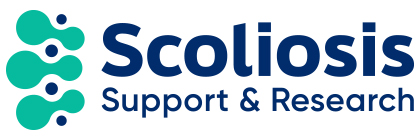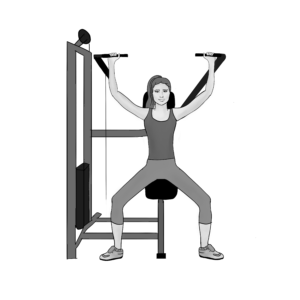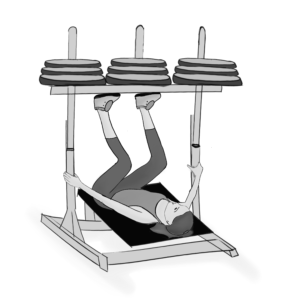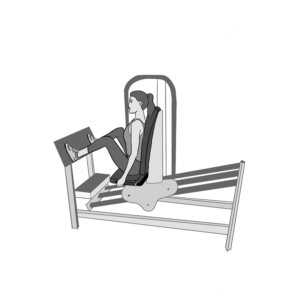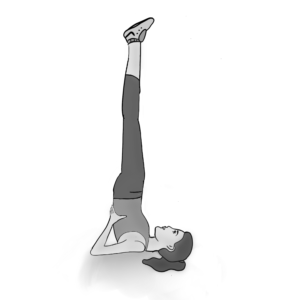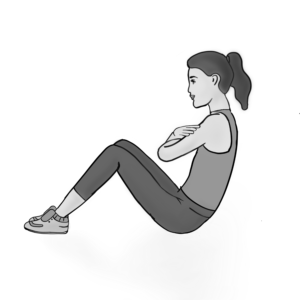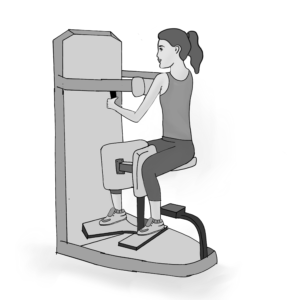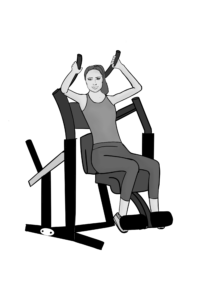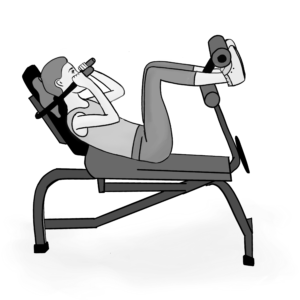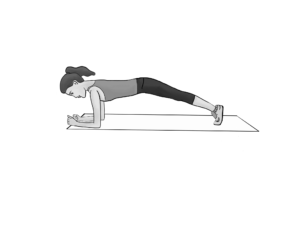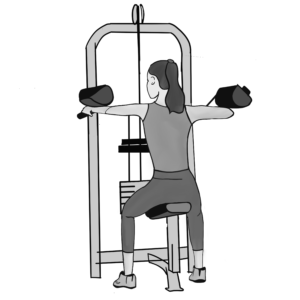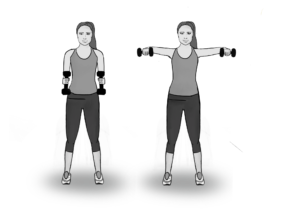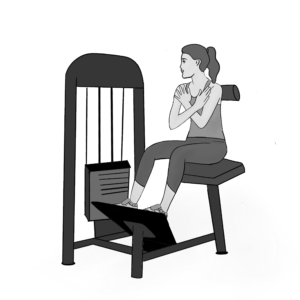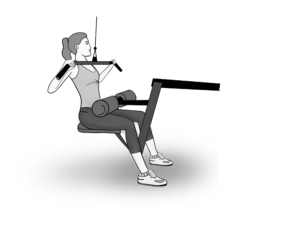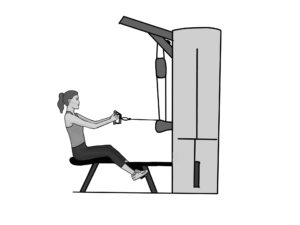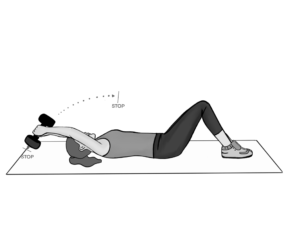Caroline Freedman is a personal trainer and author of ‘The Scoliosis Handbook of Safe and Effective Exercises Pre and Post Surgery’ https://www.scoliosishandbook.com/. This was a career move taken after realising that she could address the gap of personal trainers with an understanding of scoliosis. Caroline has had three surgeries to address her scoliosis over the years. The first was at 19 to correct an 80-something degree curve, the second was at 23 when she snapped her rod doing a back bend (a move now at the top of her list of what not to do post-fusion), her last surgery was about 6 years ago to fix the rotation that was happening in her spine.
Caroline was told by her surgeon how important it was to be strong to have a good outcome from surgery and to manage pain. Caroline took these words to heart and made it her mission to find a way to exercise that worked best for her and her fused spine. Caroline became qualified as a personal trainer 25+ years ago and brought her knowledge of scoliosis and exercise together to teach people like her the role exercise plays in living well with scoliosis.
There is often conflicting and differing opinions on exercise. We want you to find a way to incorporate exercise into your life, as the benefits of exercise for those with scoliosis cannot be overstated.
This information is designed for educational purposes only. You should not rely on this information as a substitute for, nor does it replace, professional medical advice, diagnosis, or treatment. Exercise is not without its risks and this or any other exercise program many result in injury. As with any exercise program, if at any point during your workout you begin to feel faint, dizzy or have physical discomfort, you should stop immediately and consult a medical professional. Reference to any specific product, service, process, or method does not constitute an implied or expressed recommendation, endorsement, or favouring by SAUK.
The following article is written by Caroline Freedman
Which exercises should I avoid/limit if I have scoliosis and what are the alternatives?
There’s loads you can do with a spinal fusion and just see where your level is. I’ve had three scoliosis surgeries and have been a personal trainer for 26 years. I’m very strong from lots of training. It’s important to exercise to keep our backs strong. Takes my pain away and helps me mentally too. Everyone is different with different fusion areas and levels of comfort and there are so many exercises you CAN DO with a spinal fusion from YOGA, PILATES, WEIGHTS MACHINES & FREE WEIGHTS, including safe abdominal exercises and variations etc but I avoid teaching these particular ones listed below as I have found they have not been comfortable for me or clients. For example, twisting with a fusion. I’ve trained so many clients with fusions who have strained themselves in the gym and classes training on their own without any guidelines and just following. Liz Bord from Aspire Leisure Centre at Stanmore asked me to write some guidelines. These are my personal guidelines after years of experience and the book has been endorsed by RNOH, surgeons and physiotherapists. I just find if I avoid these exercises, I don’t give myself any pain and my clients too. It is a personal choice.
Exercising & scoliosis without spinal fusion
One of the first questions I am asked about scoliosis is whether exercise is safe. Regular exercise will really help to stretch and strengthen the muscles around your spine, keeping them strong. As a result, posture will improve and you will look and feel so much better.
There is no reason why anyone with scoliosis who has not had surgery should be restricted in any way with exercise and so there are not many exercises or activities to avoid. It’s a case of listening to recommendations from the consultant, physiotherapist and your body as to what may be comfortable to do. The exercises I recommend for after scoliosis surgery are also good for strengthening your body generally while living your day-to-day life with scoliosis. The general rule for any exercise program is that if it hurts, stop, or change position.
Exercise does not prevent scoliosis but it does help with pain, posture, strength, stamina and wellbeing.
Many children and adults who have mild scoliosis through to more severe can feel some level of pain at any point during their lives. A ‘pulling’ sensation across the ribs where the muscles are stretched over the rib hump is often described to me by my scoliosis clients. I also felt the ‘pulling’ sensation before my first surgery. I agree with the professional opinion that exercise helps with pain and not only experienced this myself but my scoliosis clients have all reported back to me that their pain levels decreased.
If you do need surgery, I was advised by my consultant to get super strong prior to my operation. I worked out with free weights, resistance machines and body weight. I also attended a variety of fitness classes. It is widely recognised that the fitter you are before surgery, the quicker your full recovery will be.
TIPS – these are my suggestions
- Avoid any exercise where you have to put your body further out of alignment to get into a position you can’t really manage.
- Be very careful when performing abdominal exercises to keep your legs high so as not to place any extra pressure on your spine.
- If your ribs are very uneven and it is not comfortable to lie flat on the floor, take a small cushion, a wedge or even a soft hoodie to balance your body evenly on the floor. Play around with your positioning to make yourself comfortable.
- Don’t overload your weight. If you can’t perform 6 reps with perfect posture and technique you are lifting too much resulting in potential muscle strain. Only increase when you really find the exercise too easy and can do at least 3 sets x 20 reps.
These are two machine exercises I would avoid in the gym if you have scoliosis, with or without spinal fusion.
SHOULDER PRESS – USING A MACHINE OR FREE WEIGHTS
Your configuration is not the same as everyone else’s. Shoulder presses have to be performed lifting a bar or free weights above your shoulders symmetrically. Scoliosis by its very nature is asymmetrical. In scoliosis, shoulders are uneven to a greater or lesser degree. The shoulder blade glides over the hump of the rib cage, pushing the shoulder forward. Therefore, the action of a shoulder press exercise and forcing symmetry can push the rest of the back out of alignment.
LEG PRESS MACHINE
This compresses the spine when extending both legs as it scrunches up an uneven spine putting pressure on one side. With a heavy weight you can put the hips out of alignment when performing with alternate legs.
Scoliosis & exercising with spinal fusion
Don’t worry, there are so many exercises you will still be able to do while being mindful of your body and its restrictions. Over the next few months I’m going to go through recommended exercises that are safe and effective to perform after you have had your spinal fusion surgery. This article includes references to alternative exercises that will be shown in detail in coming articles.
To avoid any strain and extra pain here is a selection from The Scoliosis Handbook of exercises I recommend to be avoided or limited if you have had scoliosis surgery. There are loads of exercises that are perfectly safe and really beneficial for anyone with a fused spine. I LOVE Weight Training with machines and free weights. TRX with ropes is great and so is yoga and Pilates. There are so many exercise variations that it is always easy to find exercises that will work the muscles you want to work while being safe while doing so.
From my experience over 26 years of Personal Training and three Scoliosis surgeries personally, plus a daughter who wore a brace to straighten hers, these are my suggested guidelines for someone with a spinal fusion to follow. Remember, there is always a choice as everyone is different and may be perfectly OK with something I have suggested to avoid or limit. Always ask a health professional if you are unsure.
BACK BENDS
NEVER –no alternatives. Often practised in yoga (many other moves in yoga are great). These are a very bad idea if the spine is fused with rods. This is one of the reasons my first Harrington rod snapped.
SHOULDER STAND
NEVER – no alternatives. This curves the spine, puts pressure on metal work and fusion, and too much pressure on the upper spine, shoulder blades, and shoulders.
FULL NECK ROLLS
NEVER – no alternatives. Why? Often T1 (the first thoracic vertebra, at the top of the back) is the only vertebra moving and it puts too much stress on the disc. Neck rolls have been out of fashion for a long time for anyone with or without spinal issues due to the possible injuries to the associated muscles, tendons, and vertebrae.
ALTERNATIVE –
Look side to side slowly,
Look upwards and downwards slowly,
Tilt your head towards your shoulders very gently, not straining.
Abdominal exercises to avoid – There are loads of alternatives
SIT UPS
Sit ups are no good for anyone in my opinion. Even a person with a ‘normal’ spine will start to use their back muscles once they go past a certain point within their spinal range, putting stress on vertebrae and hip flexors. Never perform an abdominal exercise without supporting your head. The strain on your neck may result in considerable pain in your neck and shoulders.
ABDOMINAL EXERCISES INVOLVING LOW LEG LIFTS FROM THE FLOOR
They involve too much stress on the lower back and the risk of arching the spine, which could damage the vertebrae.
ABDOMINAL EXERCISES INVOLVING FRONT TWISTING ROTATIONAL MOVEMENT OR ANY ROTATIONAL SWINGING
These involve too much pressure on the lower spine. Post-surgery, you no longer have a natural curve that bends. The spine will over-compensate and over-use the areas where movement is free, putting immense pressure on those vertebrae. Your remaining moveable vertebrae need to be looked after. Often there is wear and tear to the vertebrae as we age, with scoliosis, those vertebrae that still have movement can be subject to over-compensation, resulting in early wear and tear. The spine should not be arched.
OTHER ABDOMINAL EXERCISES TO AVOID
- Diagonal crunches
- Twisting or rotating the body (Russian twists)
- Diagonal crunches with alternate leg lifts crisscrossing legs in the air
- Crunches without support for the head
- Full crunches
- Lifting the legs up from the floor
- Lowering the legs from 90° above the head to the floor to past 30° or 2 pm on the clock when performing lower abdominal exercises
- Taking the arms away from supporting the head unless your head is on the floor
- Using any extra free weights to make an abdominal exercise more difficult
- Arching the spine
WAIST ROTATION MACHINE
Fusion of the spine does not allow complete rotation to each side. There is a danger to swinging from side to side. There are more effective exercises for the obliques.
WEIGHTED ABDOMINAL MACHINE
Avoid this as the weighted load can place too much pressure on your trunk. It is not necessary – there are other exercises that will be more comfortable to do and more effective.
ALTERNATIVE ABDOMINALS
Side-to-side obliques
Standing beginner abs with free weights
Beginner abdominal exercise lying face down
Planking – most variations. High plank / low plank. Renegade rows. Side planks / planks and bear squats / mountain Climbers
TRX e.g., Pikes with feet in the handles if you are strong
Abs on your back with legs high, lowering if you have a strong core
Table top Abs
MACHINE DELTOID RAISES – ‘ELBOW RAISES’
These will be too heavy after surgery. You may end up very sore.
ALTERNATIVE – Free weight deltoid raises
BACK EXERCISE MACHINE
I don’t use it myself as, in my opinion, there is too much opportunity to strain a muscle. It is akin to picking up a heavy object with a rounded back.
ALTERNATIVE – Machine lat pulldown, seated machine rows upright row, bent arm pullover, TRX rows
LYING-DOWN LEG CURL MACHINE
This is used to exercise the hamstrings. The positioning of the machine often means that when curling the legs, the pressure is too great on the lower back. A seated leg curl is okay with a low weight.
ALTERNATIVE – Seated leg curl with a low weight
GLUTE MACHINE
NO – it puts a strain on the lower back.
ALTERNATIVE – Leg floor work including kick backs, lunges – all variations, squats – all variations but use light free weights. Resistance bands – e.g., side steps with squats.
Next Time! Starting back to exercise after a spinal fusion safely and effectively with explanations and how to perform the exercises safely and effectively.
